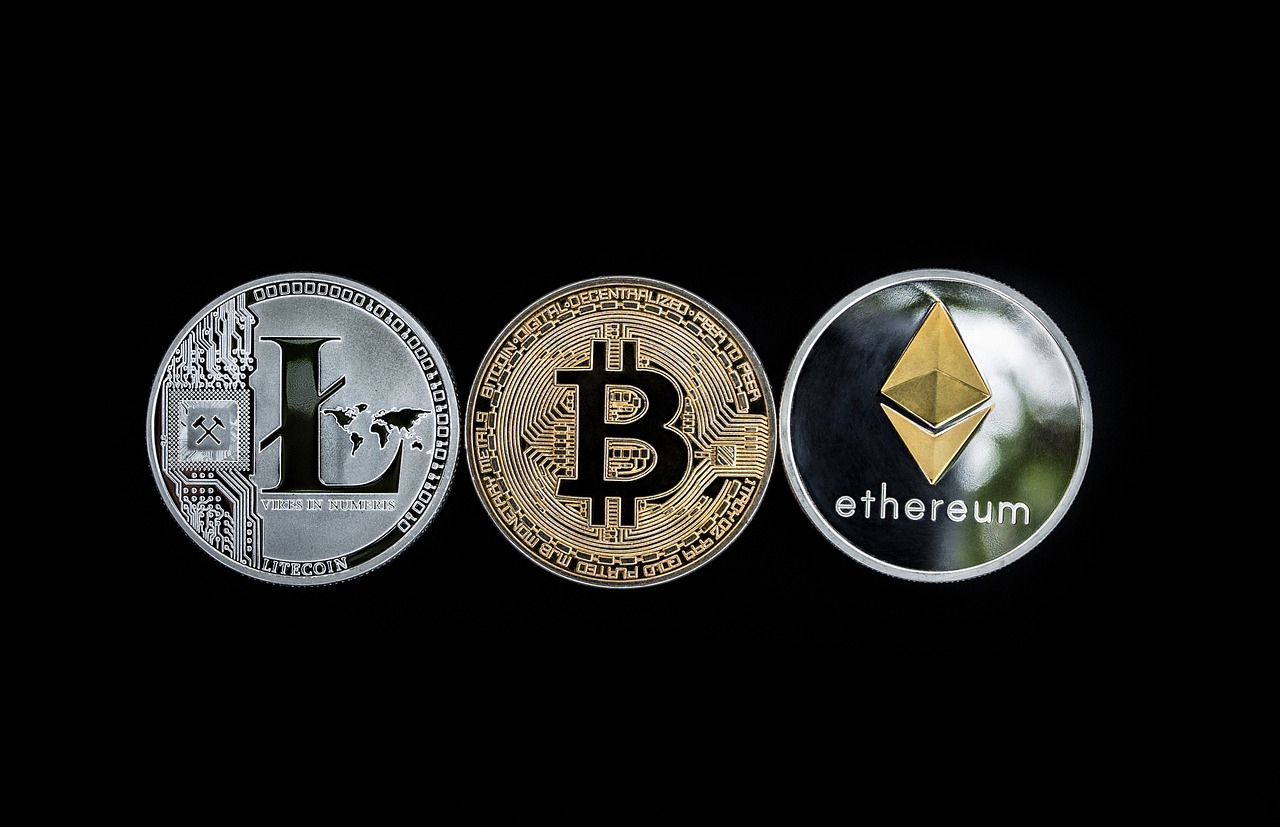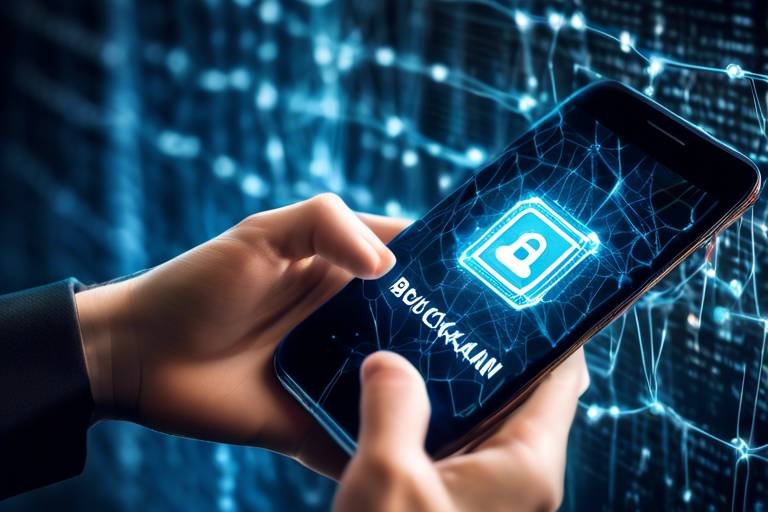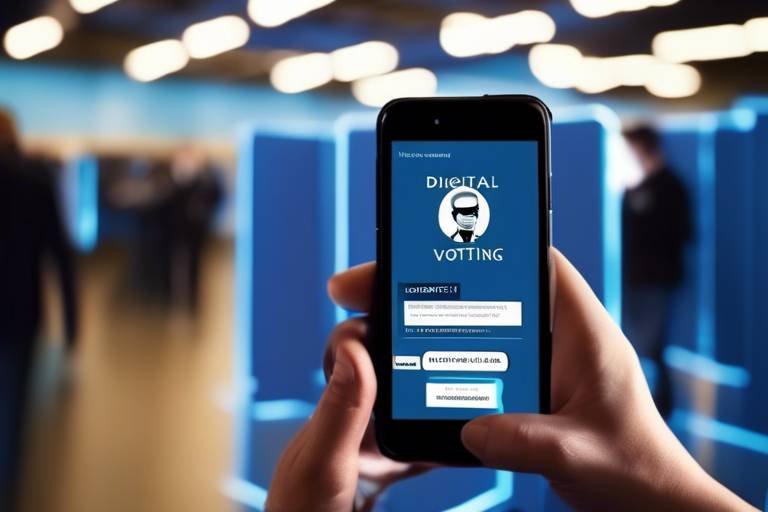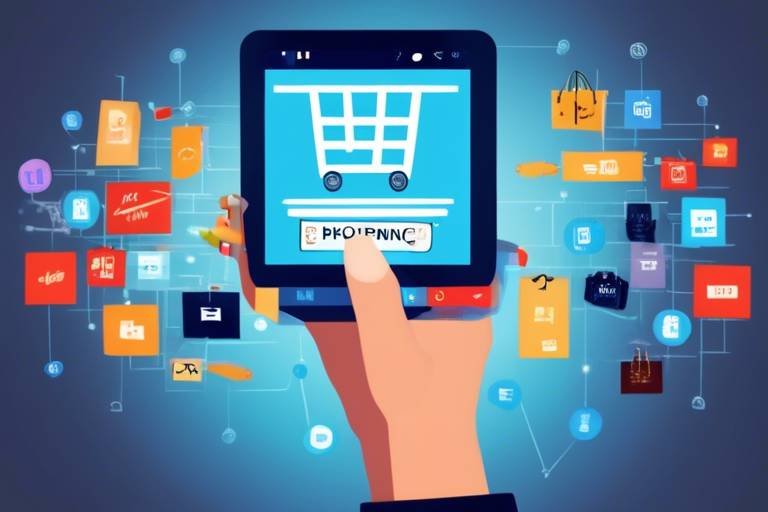How Blockchain is Enabling Secure Digital Identity Solutions
In our rapidly evolving digital landscape, the way we manage and verify our identities online is undergoing a profound transformation, largely thanks to blockchain technology. Imagine the traditional methods of identity verification as a rusty old lock that’s becoming increasingly easy to pick. Now, envision blockchain as a state-of-the-art security system that not only locks the door but also ensures that only you hold the key. This revolutionary technology is reshaping how we approach digital identity management, providing enhanced security, greater privacy, and improved user control.
So, what exactly is driving this change? At its core, blockchain offers a decentralized framework that eliminates the need for a central authority to validate identities. This decentralization means that your personal data isn't stored in a single location, making it far less vulnerable to hacks and data breaches. Instead, your identity is secured across a network of computers, each holding a copy of the information. This distributed nature not only enhances security but also empowers users to have more control over their personal information.
Consider this: with traditional identity systems, users often have to surrender their data to various organizations, each with its own security protocols. This can lead to a fragmented and insecure landscape where sensitive information is exposed to multiple threats. Blockchain changes the game by allowing individuals to manage their identities directly, sharing only the necessary information when needed. This is akin to having a digital vault where you can control who gets access to your valuables, rather than leaving them out in the open for anyone to take.
Moreover, the immutable nature of blockchain adds another layer of protection. Once data is recorded on a blockchain, it cannot be altered or deleted without consensus from the network. This ensures that your identity remains intact and verifiable, significantly reducing the risk of identity fraud. In a world where identity theft is rampant, this characteristic of blockchain is nothing short of revolutionary.
But the benefits of blockchain for digital identity management don't stop there. The technology also facilitates streamlined verification processes. By utilizing smart contracts—self-executing contracts with the terms of the agreement directly written into code—organizations can automate identity verification tasks. This not only speeds up the process but also reduces operational costs associated with manual verification.
As we delve deeper into the real-world applications of blockchain in identity solutions, we find that various sectors are already harnessing its potential. For instance, in the financial sector, banks are adopting blockchain to streamline Know Your Customer (KYC) processes, reducing the time and resources spent on verifying customer identities. In healthcare, patient identities can be securely managed, ensuring that sensitive health information is only accessible to authorized individuals. Even government agencies are exploring blockchain for issuing secure digital IDs, enhancing public trust and reducing fraud.
However, as with any emerging technology, there are challenges to navigate. Implementing blockchain for digital identity solutions requires a thorough understanding of regulatory frameworks and compliance requirements. Organizations must ensure that their blockchain solutions align with existing laws and regulations to foster trust and encourage widespread adoption. This is where collaboration between technology providers, regulators, and users becomes essential.
Looking ahead, the future of digital identity management is bright, with promising trends on the horizon. The integration of biometric authentication, artificial intelligence, and blockchain will likely redefine how we interact with our digital identities. Imagine a world where your face or fingerprint serves as your password, securely linked to a blockchain that verifies your identity in real-time. This convergence of technologies could create an ecosystem that is not only secure but also incredibly user-friendly.
In conclusion, blockchain technology is paving the way for a new era of secure digital identity solutions. By tackling the challenges of traditional systems and leveraging its unique advantages, we can build a more secure and user-centric identity ecosystem. The journey may be just beginning, but the possibilities are endless, and the potential for transformation is truly exciting.
- What is blockchain technology? Blockchain is a decentralized digital ledger that records transactions across many computers in a way that the registered information cannot be altered retroactively.
- How does blockchain enhance digital identity security? It decentralizes the storage of identity information, making it less vulnerable to hacks and ensuring data integrity through its immutable nature.
- Can blockchain be used in different sectors for identity management? Yes, industries such as finance, healthcare, and government are already implementing blockchain solutions for secure identity verification.
- What are smart contracts? Smart contracts are self-executing contracts with the terms directly written into code, which automate processes like identity verification.

The Importance of Digital Identity
In today's digital age, digital identity has become a cornerstone of our online interactions. Think about it: every time you log into a website, make an online purchase, or connect with friends on social media, you're relying on your digital identity. This identity is not just a username or password; it encompasses a wealth of information about who you are, your preferences, and your online behavior. The significance of digital identity cannot be overstated, as it influences not only access to various services but also the level of protection you have against fraud and identity theft.
To truly grasp the importance of digital identity, consider the following points:
- Access to Services: Your digital identity determines what services you can access online. Whether it's banking, healthcare, or social networking, a secure digital identity is essential for seamless access.
- Protection Against Fraud: A robust digital identity helps safeguard against identity theft. With increasing instances of data breaches, having a secure identity can make a world of difference.
- Personalization: Companies use your digital identity to tailor services and advertisements to your preferences, enhancing your overall experience.
Moreover, as we transition into a more interconnected world, the need for a secure digital identity becomes even more pressing. With the rise of remote work, online transactions, and digital communication, establishing a trustworthy digital persona is paramount. Without it, individuals and organizations risk falling victim to cyber threats, which can lead to financial loss and reputational damage.
In essence, digital identity serves as your virtual passport, granting you access to a multitude of online experiences while also requiring you to safeguard it fiercely. As we navigate through this digital landscape, understanding the importance of digital identity will empower users to take control of their online presence and advocate for more secure solutions.

Challenges in Current Digital Identity Systems
In today's digital landscape, the significance of a robust digital identity cannot be overstated. However, the systems currently in place face a myriad of challenges that undermine their effectiveness and security. One of the most pressing issues is the prevalence of data breaches. With cyberattacks becoming increasingly sophisticated, personal information stored in centralized databases is often exposed, leaving individuals vulnerable to identity theft and fraud.
Moreover, many existing systems lack adequate user control. In traditional setups, users often have little say over how their data is collected, stored, and utilized. This lack of transparency can lead to distrust, as individuals are left wondering who has access to their information and how it’s being used. Imagine handing over your personal details to a stranger without knowing their intentions; it’s a disconcerting thought, isn’t it?
Additionally, the verification processes in current digital identity systems can be cumbersome and inefficient. Users frequently encounter lengthy procedures that require multiple steps, making the experience frustrating. This complexity can deter individuals from using digital identity solutions altogether, which defeats the purpose of having a streamlined system. In fact, a recent survey indicated that over 60% of users abandon identity verification processes due to their complexity.
| Challenge | Description |
|---|---|
| Data Breaches | Increased risk of personal information exposure due to cyberattacks. |
| Lack of User Control | Users have limited say over their data management and usage. |
| Inefficient Verification Processes | Lengthy and complicated procedures that deter users. |
Another significant challenge is the fragmentation of identity systems across different platforms and services. Each service often requires its own unique identity verification process, leading to a disjointed experience for users. This fragmentation not only complicates the user experience but also increases the chances of discrepancies and errors in personal data management. Users are often left juggling multiple identities, which can be as confusing as trying to remember various passwords for different accounts.
Lastly, there are regulatory and compliance hurdles that current digital identity systems must navigate. Different regions have varying laws regarding data protection and user privacy, making it challenging for organizations to implement a uniform identity management solution. Without a clear understanding of these regulations, companies risk facing legal repercussions, further complicating the landscape of digital identity management.
In summary, the challenges faced by current digital identity systems are multifaceted, ranging from security vulnerabilities and user control issues to inefficiencies and regulatory complexities. Addressing these challenges is crucial for developing a more secure and user-friendly digital identity framework.
- What are the main challenges in current digital identity systems?
Data breaches, lack of user control, inefficient verification processes, fragmentation, and regulatory hurdles are the primary challenges. - How do data breaches affect digital identity?
Data breaches expose personal information, leading to risks of identity theft and fraud. - Why is user control important in digital identity management?
User control fosters transparency and trust, allowing individuals to manage their data effectively.

How Blockchain Works for Identity Management
When we think about identity management, the traditional systems often come to mind, filled with databases and centralized servers. However, blockchain technology flips this concept on its head. Imagine a world where your identity is not stored in one vulnerable location but instead is spread across a decentralized network. This is the essence of how blockchain works for identity management. By utilizing a distributed ledger, blockchain creates a tamper-proof environment where each transaction is recorded in an immutable format. This means that once your identity data is on the blockchain, it cannot be altered or deleted, providing a level of security that traditional systems simply cannot match.
The magic of blockchain lies in its decentralization. Instead of relying on a single authority to verify identities, blockchain enables multiple nodes within the network to participate in the verification process. This not only enhances security but also promotes transparency. Each participant in the network has access to the same information, which reduces the risk of fraud and identity theft. In a way, it’s like having a community watch over your identity; everyone has a stake in ensuring that the information remains accurate and secure.
Furthermore, blockchain employs cryptographic techniques to enhance security and privacy. Each identity is linked to a unique cryptographic key, allowing users to control their own data without the need for intermediaries. This means that you can share specific pieces of your identity with only those who need it, keeping the rest private. Think of it as having a key to a personal vault where you can choose who gets access to what. This level of control is a game changer in a digital world where data breaches are all too common.
To illustrate how blockchain functions in identity management, consider the following table that outlines the key components involved in this process:
| Component | Description |
|---|---|
| Decentralized Ledger | A distributed database that records all identity transactions across multiple nodes. |
| Cryptographic Keys | Unique keys that allow users to control access to their identity data securely. |
| Smart Contracts | Self-executing contracts with the terms directly written into code, automating verification processes. |
| Immutable Records | Once data is recorded on the blockchain, it cannot be changed or deleted, ensuring integrity. |
In summary, blockchain technology revolutionizes identity management by providing a decentralized, secure, and user-controlled framework. It eliminates the need for central authorities, reduces the risk of fraud, and empowers individuals with control over their own identity data. As we continue to explore the potential of blockchain, it’s clear that this technology is not just a passing trend; it’s a fundamental shift in how we think about identity in the digital age.

Benefits of Blockchain-Based Identity Solutions
The advent of blockchain technology has ushered in a new era for digital identity management, and the benefits it offers are both profound and transformative. One of the most significant advantages is enhanced security. Unlike traditional systems that often rely on centralized databases, blockchain operates on a decentralized framework. This means that personal data is not stored in a single location, drastically reducing the chances of data breaches. Imagine trying to rob a bank that has no central vault; that's essentially how blockchain protects your identity. Each transaction is recorded in a block and linked to a previous block, creating an immutable chain that is nearly impossible to alter without detection.
Another compelling benefit is user empowerment. With blockchain, individuals have greater control over their personal information. They can decide what data to share, with whom, and for how long. This shift from a provider-centric model to a user-centric model is akin to handing over the keys to your own identity. Instead of relying on third parties to verify your identity, you can directly manage and authenticate it, thereby minimizing the risk of identity theft. The use of digital wallets allows users to store their identity credentials securely and access them at their discretion.
In addition to security and user control, blockchain-based identity solutions can lead to reduced operational costs. Traditional identity verification processes often involve multiple intermediaries, each taking a cut of the transaction. By eliminating these middlemen, blockchain streamlines the verification process, resulting in significant cost savings for businesses. This is especially beneficial in sectors like finance and healthcare, where the costs of identity verification can be substantial. Imagine a world where you can verify your identity with a simple click, without the need for extensive paperwork or waiting in long queues.
Moreover, blockchain technology enhances transparency and trust. Since all transactions are recorded on a public ledger, users can verify the authenticity of their identity credentials in real-time. This transparency fosters trust, as individuals and organizations can independently verify the information without relying solely on a central authority. In a world where misinformation is rampant, having a trustworthy source of identity verification is invaluable.
Lastly, the scalability of blockchain solutions means they can adapt to the growing demands of digital identity management. As more services move online, the need for secure, efficient identity verification will only increase. Blockchain can scale to accommodate this demand, making it a future-proof solution. As we continue to embrace digital transformation, the ability to handle millions of identity verifications seamlessly will become increasingly critical.
In summary, the benefits of blockchain-based identity solutions are numerous and compelling. From enhanced security and user empowerment to reduced costs and increased transparency, it’s clear that blockchain is not just a trend; it’s a revolution in how we think about and manage our digital identities.
- What is blockchain technology? Blockchain is a decentralized digital ledger that records transactions across many computers in a way that the registered transactions cannot be altered retroactively.
- How does blockchain enhance security for digital identities? By decentralizing data storage and using cryptographic techniques, blockchain reduces the risk of data breaches and ensures data integrity.
- Can users control their own data with blockchain? Yes, blockchain allows users to have complete control over their personal information, deciding what to share and with whom.
- Are blockchain identity solutions cost-effective? Yes, by eliminating intermediaries and streamlining processes, blockchain can significantly reduce operational costs associated with identity verification.
- What industries can benefit from blockchain-based identity solutions? Industries such as finance, healthcare, government, and many others can leverage blockchain for secure digital identity management.

Real-World Applications of Blockchain in Identity Solutions
In today's digital landscape, the need for secure and reliable identity verification is more critical than ever. Blockchain technology is stepping up to the plate, offering innovative solutions across various sectors. Imagine a world where your digital identity is as secure as a vault, where you have complete control over your personal information, and where the risk of identity theft is drastically reduced. Sounds appealing, right? Well, that’s exactly what blockchain is making possible.
One of the most significant real-world applications of blockchain in identity solutions is in the financial sector. Banks and financial institutions are leveraging blockchain to create secure digital identities for their customers. This not only speeds up the verification process but also enhances security. For instance, when you open a bank account, traditional methods often require extensive paperwork and time. With blockchain, your identity can be verified almost instantaneously, thanks to its decentralized nature.
Moreover, the healthcare industry is also reaping the benefits of blockchain-based identity solutions. Patient records are sensitive and need to be protected rigorously. By utilizing blockchain, healthcare providers can ensure that patient identities are securely verified while allowing patients to control who has access to their medical information. Imagine being able to share your medical history with a new doctor without the fear of your data being compromised or mishandled. Blockchain makes this possible.
Another fascinating application is found in the government sector. Governments around the globe are exploring blockchain for issuing digital IDs to citizens. This could streamline processes such as voting, applying for government services, and even passport issuance. A blockchain-based digital ID system would not only enhance security but also reduce fraud and corruption, providing a transparent and trustworthy means of identity verification.
To illustrate the impact of blockchain in these sectors, let’s take a look at a few examples:
| Sector | Application | Benefits |
|---|---|---|
| Finance | Customer Identity Verification | Faster processing, enhanced security |
| Healthcare | Patient Identity Management | Secure access, improved patient control |
| Government | Digital ID Issuance | Reduced fraud, increased transparency |
In addition to these sectors, blockchain is proving beneficial in education as well. Institutions are beginning to issue diplomas and certificates on the blockchain, providing a tamper-proof way to verify educational credentials. This means that employers can trust that the qualifications listed on a resume are legitimate, reducing the risk of hiring fraud.
As we look ahead, it’s clear that the applications of blockchain in identity solutions are just beginning to scratch the surface. With ongoing advancements in technology and an increasing awareness of the importance of digital identity security, we can expect even more innovative uses to arise. The future is bright, and the potential for blockchain to revolutionize how we manage our identities is enormous.
- What is blockchain technology? Blockchain is a decentralized digital ledger that records transactions across many computers securely and immutably.
- How does blockchain enhance security in identity management? Blockchain's cryptographic features ensure that data is encrypted and tamper-proof, significantly reducing the risk of identity theft.
- Can blockchain technology be used for anything other than identity management? Yes, blockchain has numerous applications including supply chain management, financial transactions, and smart contracts.
- What are the challenges of implementing blockchain for identity solutions? Challenges include regulatory compliance, integration with existing systems, and public awareness of blockchain technology.

Regulatory and Compliance Considerations
When diving into the world of blockchain for digital identity solutions, it’s crucial to understand the regulatory and compliance landscape. As with any emerging technology, blockchain faces scrutiny from various regulatory bodies, each with their own set of rules and guidelines. These regulations are essential for ensuring that users' rights are protected and that their personal data remains secure. Imagine navigating a maze—each turn represents a different regulation, and one wrong turn could lead to significant legal implications.
One of the primary challenges in implementing blockchain for digital identity is the diversity of regulations across different jurisdictions. For instance, while the European Union has established the General Data Protection Regulation (GDPR), which emphasizes user consent and data privacy, other regions may have different approaches. This inconsistency can make it difficult for organizations to create a universal identity solution that complies with all applicable laws.
Furthermore, organizations must consider the implications of data sovereignty. This concept refers to the idea that data is subject to the laws of the country in which it is collected. In a decentralized blockchain network, where data could be stored across multiple countries, ensuring compliance with local laws becomes a complex challenge. Companies must work closely with legal experts to navigate these waters effectively.
In addition to understanding regulations, organizations must also ensure that their blockchain solutions align with industry standards. For example, in the financial sector, compliance with the Payment Card Industry Data Security Standard (PCI DSS) is essential for protecting cardholder data. Similarly, healthcare organizations must adhere to the Health Insurance Portability and Accountability Act (HIPAA) to safeguard patient information. These standards not only help in mitigating risks but also build trust with users.
To further complicate matters, regulatory bodies are still in the process of defining how blockchain fits into existing laws. This means that organizations must remain agile, adapting their strategies as regulations evolve. It’s like trying to hit a moving target—what is compliant today may not be tomorrow. To stay ahead, companies should actively engage with regulators, participate in industry groups, and contribute to the dialogue surrounding blockchain regulations.
In summary, the regulatory and compliance considerations surrounding blockchain for digital identity are multifaceted and ever-changing. Organizations must be proactive in understanding and addressing these challenges to ensure successful implementation. By doing so, they not only protect themselves from legal repercussions but also foster a more secure and trustworthy digital identity ecosystem.
- What are the main regulatory challenges for blockchain in identity management?
Organizations face challenges such as data sovereignty, compliance with local laws, and the need to align with industry standards. - How can companies ensure compliance with evolving regulations?
By engaging with regulatory bodies, participating in industry discussions, and staying informed about changes in the regulatory landscape. - What role does data sovereignty play in blockchain identity solutions?
Data sovereignty affects how organizations manage and store user data, as it must comply with the laws of the country where the data is collected.

Future Trends in Digital Identity and Blockchain
As we gaze into the crystal ball of technology, it's clear that the future of digital identity management is being profoundly shaped by the integration of blockchain technology. Imagine a world where you control your own identity, where your personal information is not just stored, but is securely managed and verified through decentralized networks. This is not just a dream; it's quickly becoming a reality.
One of the most exciting trends on the horizon is the incorporation of biometric verification into blockchain identity systems. Think about it: with the rise of facial recognition and fingerprint scanning, the ability to combine these technologies with blockchain could lead to an unparalleled level of security. Biometric data, stored on a blockchain, would be immutable and accessible only to the user, significantly reducing the risk of identity theft.
Another trend to watch is the increasing use of artificial intelligence (AI) in conjunction with blockchain for identity verification. AI can analyze vast amounts of data to identify patterns and anomalies, making it an excellent tool for detecting fraudulent activities. When paired with blockchain's secure and transparent nature, we could see a dramatic reduction in fraud cases. Imagine a system where AI continuously monitors identity transactions, flagging suspicious activities in real-time!
Moreover, the concept of self-sovereign identity (SSI) is gaining traction. This model empowers individuals to own and control their digital identities without relying on centralized authorities. With SSI, users can selectively share their information with service providers, ensuring that they have full control over what data is shared and with whom. It’s like having a digital wallet where you can choose which cards to show, rather than handing over your entire wallet every time you need to prove your identity.
Furthermore, we can expect to see a growing emphasis on interoperability among different blockchain systems. As various industries adopt blockchain for identity management, the ability for these systems to communicate and verify identities across platforms will be crucial. This interoperability will not only enhance user experience but also streamline processes across sectors, making identity verification faster and more efficient.
Lastly, regulatory frameworks will evolve to accommodate these advancements. Governments and organizations will need to establish guidelines that not only protect users but also foster innovation in blockchain identity solutions. This balance between security and flexibility will be vital in paving the way for mass adoption.
In summary, the future of digital identity management is bright, with blockchain technology leading the charge. From biometric integration to self-sovereign identity and AI enhancement, the advancements we are witnessing will revolutionize how we think about identity in the digital world. As we continue to explore these trends, the possibilities seem endless, promising a future where security, privacy, and user control are at the forefront of digital identity solutions.
- What is blockchain technology? Blockchain is a decentralized digital ledger that securely records transactions across multiple computers, ensuring that the data cannot be altered retroactively.
- How does blockchain enhance digital identity security? By using cryptographic techniques and a decentralized framework, blockchain reduces the risk of data breaches and fraud, giving users more control over their personal information.
- What is self-sovereign identity? Self-sovereign identity allows individuals to own and manage their digital identities without relying on centralized authorities, enabling selective sharing of personal information.
- Will blockchain technology replace traditional identity systems? While blockchain offers significant advantages, it is more likely to complement existing systems rather than completely replace them, especially in the transition phase.

Conclusion: The Path Forward
In conclusion, blockchain technology is not just a passing trend; it represents a fundamental shift in how we manage and secure our digital identities. As we stand on the brink of this technological revolution, it’s essential to recognize the immense potential blockchain holds for creating a more secure, user-centric identity ecosystem. By addressing the current challenges faced by traditional digital identity systems—such as data breaches, lack of user control, and inefficient verification processes—blockchain can pave the way for solutions that empower users and enhance privacy.
Moreover, the integration of blockchain with other emerging technologies, such as artificial intelligence and biometrics, will further enrich the landscape of digital identity management. Imagine a world where your identity is not only secure but also seamlessly verified through a combination of biometric data and blockchain-backed credentials. This is not just a dream; it is a reality that is rapidly approaching.
However, for this vision to materialize, stakeholders—including governments, businesses, and technology developers—must collaborate to navigate the regulatory frameworks and compliance requirements that come with implementing blockchain solutions. The path forward will require not just innovation but also a commitment to building trust among users, ensuring that their identities are protected and respected.
As we look ahead, it’s crucial for individuals and organizations to stay informed and engaged in this evolving space. The journey towards a secure digital identity ecosystem is just beginning, and by embracing blockchain technology, we can create a future where identity management is not only secure but also accessible and efficient.
- What is blockchain technology?
Blockchain is a decentralized digital ledger that records transactions across many computers securely and immutably. - How does blockchain enhance digital identity security?
By using cryptographic techniques and a decentralized framework, blockchain ensures that identity data is secure and tamper-proof. - What are the benefits of using blockchain for digital identity?
Benefits include enhanced security, user empowerment, reduced fraud risk, and lower operational costs. - Which industries are adopting blockchain for identity solutions?
Industries such as finance, healthcare, and government are leading the way in implementing blockchain for digital identity verification. - What challenges must be addressed for successful blockchain identity solutions?
Challenges include regulatory compliance, user education, and ensuring interoperability with existing systems.
Frequently Asked Questions
- What is a digital identity?
A digital identity is the online representation of an individual, organization, or entity. It encompasses various attributes, including usernames, passwords, and personal information, which are used to authenticate and verify identity in online interactions.
- How does blockchain enhance digital identity security?
Blockchain enhances digital identity security by providing a decentralized system that is resistant to tampering. The use of cryptographic techniques ensures that personal data is securely stored and only accessible by authorized users, reducing the risk of data breaches and identity theft.
- What are the main challenges of current digital identity systems?
Current digital identity systems face several challenges, including data breaches, lack of user control over personal information, and inefficient verification processes. These issues can lead to unauthorized access and increased vulnerability to fraud.
- Can blockchain completely eliminate identity theft?
While blockchain significantly reduces the risk of identity theft by securing data and giving users more control, it may not completely eliminate the threat. Users still need to practice good security hygiene, such as using strong passwords and being cautious about sharing personal information.
- What industries are currently using blockchain for identity solutions?
Various industries, including finance, healthcare, and government, are implementing blockchain technology for digital identity verification. These applications showcase the versatility of blockchain in enhancing security and efficiency in identity management.
- What role do regulatory frameworks play in blockchain identity solutions?
Regulatory frameworks are crucial for the successful deployment of blockchain identity solutions. They provide guidelines on data protection, privacy, and compliance, ensuring that these solutions meet legal standards and protect users' rights.
- What future trends can we expect in digital identity management?
Future trends in digital identity management include the integration of biometrics, artificial intelligence, and advanced blockchain technologies. These innovations will likely enhance security, improve user experience, and streamline identity verification processes.
- How can individuals take control of their digital identities?
Individuals can take control of their digital identities by adopting blockchain-based identity solutions that allow them to manage their personal information. By using these systems, users can decide who has access to their data and how it is used, empowering them in the digital space.


















